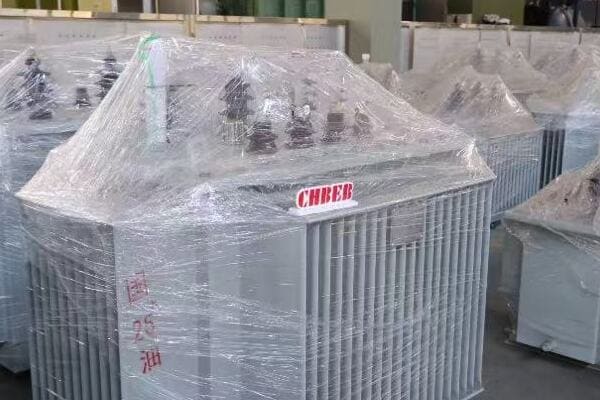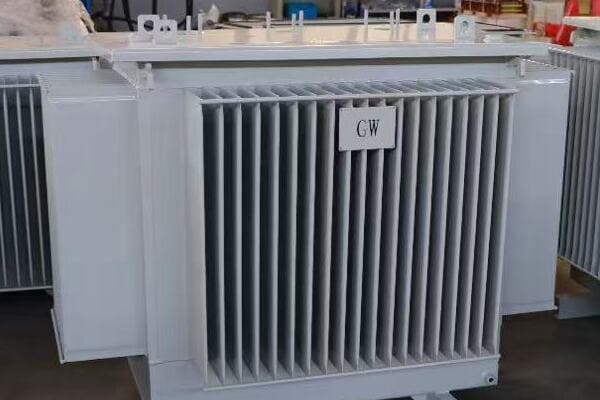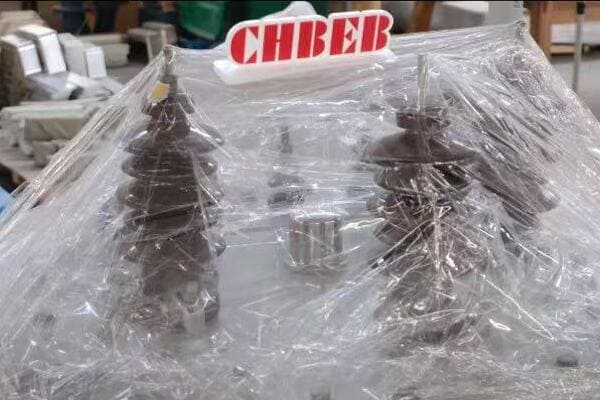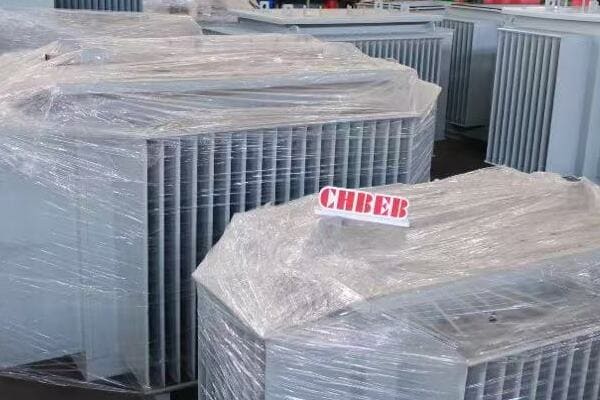How to Choose a Reliable Oil Immersed Transformer Supplier in China: A Buyer’s Guide?
Are you feeling overwhelmed by the prospect of sourcing oil immersed transformers from China? You’re not alone. Many buyers find themselves lost in a sea of options, unsure how to distinguish reliable suppliers from the rest. But what if you had a practical, step-by-step guide to navigate this complex market?
This buyer’s guide offers a hands-on approach to selecting a trustworthy oil immersed transformer supplier in China. It covers practical steps from initial research to final negotiations, including how to verify supplier claims, conduct effective factory audits, and negotiate favorable terms. Learn how to mitigate risks and secure a reliable partnership for your transformer needs.

In this comprehensive guide, I’ll walk you through the practical steps of choosing a reliable oil immersed transformer supplier in China. Drawing from my years of experience in the field, I’ll share insider tips and real-world strategies that can help you make an informed decision and avoid common pitfalls.
Why Chinese Suppliers Dominate the Oil Immersed Transformer Market?
Have you ever wondered how Chinese manufacturers managed to capture such a large share of the global transformer market? It’s not just about low prices. But what specific advantages have propelled Chinese suppliers to the forefront of this industry?
Chinese suppliers dominate the oil immersed transformer market due to a combination of factors. These include massive production capacity, significant government investment in power infrastructure, a robust supply chain for raw materials, and a growing focus on technological innovation. Their ability to offer competitive pricing while continuously improving quality has made them attractive to global buyers.

Key Factors Behind China’s Market Dominance
Let’s explore the main reasons for China’s strong position:
- Unparalleled Production Capacity
- Government Support and Infrastructure Investment
- Robust Supply Chain for Raw Materials
- Technological Advancements and Innovation
- Competitive Pricing Strategies
Unparalleled Production Capacity
Chinese manufacturers offer enormous production volumes:
- Many factories can produce thousands of units annually
- Ability to handle large-scale orders efficiently
- Flexible production lines adaptable to various specifications
I recently visited a transformer factory in Sichuan that could produce over 50,000 distribution transformers annually. This scale is hard to match in many other countries.
Government Support and Infrastructure Investment
Strong government backing has been crucial:
- Massive investments in domestic power grid upgrades
- Support for international expansion through initiatives like Belt and Road
- Favorable policies for manufacturing and export
During a recent project in Southeast Asia, I saw firsthand how Chinese companies leveraged government support to offer competitive financing options, giving them an edge over other international suppliers.
Robust Supply Chain for Raw Materials
China’s well-developed supply chain offers advantages:
- Easy access to key materials like copper and electrical steel
- Efficient logistics networks for component sourcing
- Ability to control costs through vertical integration
Here’s a quick look at how this impacts production:
| Material | Advantage | Impact on Production |
|---|---|---|
| Copper | Domestic supply | Stable pricing, quick sourcing |
| Electrical Steel | Local production | Customization, quality control |
| Insulation Materials | Diverse suppliers | Flexibility in designs |
Technological Advancements and Innovation
Chinese manufacturers are increasingly focusing on innovation:
- Investments in R&D for more efficient transformer designs
- Adoption of advanced manufacturing technologies
- Growing number of patents in transformer technology
I was impressed during a recent factory tour where a manufacturer showcased their new automated winding technology, significantly improving precision and reducing production time.
Competitive Pricing Strategies
Chinese suppliers maintain cost advantages:
- Lower labor costs compared to many Western countries
- Economies of scale in production
- Efficient supply chain management
Key reasons for China’s market dominance:
- Ability to produce at scale while maintaining quality
- Strong government support driving both domestic and international growth
- Well-developed supply chain offering cost and flexibility advantages
- Increasing focus on technological innovation
- Competitive pricing without compromising on quality
In my experience, these factors combine to create a compelling value proposition for buyers. I’ve seen cases where Chinese suppliers not only matched but exceeded the quality of Western manufacturers, all while maintaining a significant price advantage.
For instance, in a recent project for a Middle Eastern utility company, we sourced transformers from a top Chinese manufacturer. The client was initially skeptical but was ultimately impressed by the quality, competitive pricing, and the supplier’s ability to customize units for their specific grid requirements.
As we move forward to discuss the challenges of sourcing from China, it’s important to keep these strengths in mind. While there are certainly hurdles to overcome, the potential benefits of working with Chinese suppliers are substantial.
Top Challenges When Sourcing Transformers from China?
Are you aware of the potential pitfalls that await unprepared buyers in the Chinese transformer market? While the opportunities are significant, so are the risks. But what specific challenges should you be prepared to face, and how can you navigate them successfully?
Sourcing transformers from China presents several key challenges. These include verifying supplier credentials, ensuring consistent quality across large orders, navigating complex logistics and customs procedures, managing communication barriers, and protecting intellectual property. Understanding these challenges is crucial for implementing effective risk mitigation strategies.

Critical Challenges in Chinese Transformer Sourcing
Let’s dive into the main challenges buyers face:
- Verifying Supplier Credentials
- Ensuring Consistent Quality
- Navigating Logistics and Customs
- Overcoming Communication Barriers
- Protecting Intellectual Property
Verifying Supplier Credentials
Authenticating supplier claims can be tricky:
- Risk of encountering companies with falsified certifications
- Difficulty in verifying production capabilities from afar
- Importance of distinguishing between manufacturers and trading companies
I once encountered a supplier who claimed to be a manufacturer but was actually a trading company. This led to issues with quality control and delivery times. Always verify through site visits or trusted third-party audits.
Ensuring Consistent Quality
Maintaining quality across large orders can be challenging:
- Potential for quality variations between samples and bulk production
- Importance of regular quality checks and inspections
- Need for clear, enforceable quality standards in contracts
During a large order, we faced issues with inconsistent quality in the later batches. Implementing a staged quality control process with regular inspections helped resolve this issue.
Navigating Logistics and Customs
Complex shipping and customs procedures can cause delays:
- Understanding and complying with export regulations
- Managing shipping risks and insurance
- Navigating customs clearance in both China and the destination country
Here’s a quick guide to common logistical challenges:
| Challenge | Potential Impact | Mitigation Strategy |
|---|---|---|
| Export Regulations | Shipment delays | Work with experienced freight forwarders |
| Shipping Risks | Damage during transit | Comprehensive insurance coverage |
| Customs Clearance | Unexpected fees, delays | Clear documentation, customs broker |
Overcoming Communication Barriers
Language and cultural differences can lead to misunderstandings:
- Potential for miscommunication in technical specifications
- Different interpretations of contract terms
- Time zone differences affecting real-time communication
I recall a project where a misunderstanding of technical terms led to a production error. Employing bilingual technical experts and using detailed visual aids in communications helped prevent future issues.
Protecting Intellectual Property
Safeguarding proprietary designs can be challenging:
- Risk of unauthorized use of custom designs
- Importance of clear IP protection clauses in contracts
- Need for careful management of technical information sharing
Key strategies to address these challenges:
- Conduct thorough due diligence on potential suppliers
- Implement a comprehensive quality control process
- Work with experienced logistics partners familiar with transformer shipping
- Invest in clear, detailed communication, possibly using intermediaries
- Develop strong contracts with clear IP protection clauses
In my experience, successfully navigating these challenges often comes down to thorough preparation and proactive management. I’ve seen projects where early recognition and addressing of these issues led to smooth procurement processes, while ignoring them resulted in significant problems.
For example, in a recent large-scale procurement, we implemented a staged quality control process, including pre-production sample approval, in-production inspections, and final testing. This approach helped us catch and address potential issues early, ensuring the final products met all our specifications.
As we move on to discuss the key factors for evaluating a transformer supplier, keep these challenges in mind. Understanding and preparing for these potential issues is crucial in developing an effective supplier evaluation and selection strategy.
7 Key Factors to Evaluate a Transformer Supplier?
Are you wondering how to effectively assess potential oil immersed transformer suppliers in China? With so many options available, it can be overwhelming to determine which factors are truly crucial. But what are the most important criteria you should consider to ensure you’re partnering with a reliable and capable supplier?
When evaluating a Chinese transformer supplier, focus on these seven key factors: verified certifications and qualifications, actual production capabilities, quality control processes, customization abilities, financial stability, export experience, and after-sales support. These factors help ensure you’re partnering with a supplier who can meet your specific needs reliably and consistently.

Critical Evaluation Factors for Transformer Suppliers
Let’s explore these seven crucial factors in detail:
- Verified Certifications and Qualifications
- Actual Production Capabilities
- Quality Control Processes
- Customization Abilities
- Financial Stability
- Export Experience
- After-Sales Support
Verified Certifications and Qualifications
Ensure all claimed certifications are authentic:
- Verify ISO, IEC, and other relevant certifications
- Check for China Compulsory Certification (CCC) if applicable
- Confirm qualifications with industry associations
I once discovered a supplier using an outdated ISO certification. Always verify the current status of certifications directly with the issuing bodies.
Actual Production Capabilities
Assess the supplier’s true manufacturing capacity:
- Conduct on-site visits to verify production facilities
- Review production records and current order books
- Assess technological capabilities and equipment quality
During a factory visit, I noticed that a supplier’s actual production line didn’t match their claimed capacity. This discovery was crucial in our decision-making process.
Quality Control Processes
Evaluate the robustness of quality assurance measures:
- Review quality control procedures at each production stage
- Check for in-house testing facilities and capabilities
- Assess the supplier’s track record in meeting quality standards
Here’s a quick checklist for assessing quality control:
| Aspect | What to Look For | Why It’s Important |
|---|---|---|
| Incoming QC | Material testing procedures | Ensures quality inputs |
| In-Process QC | Regular checks during production | Catches issues early |
| Final QC | Comprehensive testing of finished products | Guarantees end quality |
| Documentation | Detailed quality records | Enables traceability |
Customization Abilities
Determine the supplier’s flexibility in meeting specific requirements:
- Assess their engineering and design capabilities
- Review examples of past customization projects
- Evaluate their willingness to adapt to your specific needs
I recently worked with a supplier who excelled in customizing transformers for unique environmental conditions. This flexibility was crucial for our project’s success.
Financial Stability
Ensure the supplier has a solid financial foundation:
- Review financial statements and credit reports
- Check for any legal issues or outstanding debts
- Assess their investment in R&D and facility upgrades
Export Experience
Look for proven track record in international markets:
- Review their history of export projects
- Check compliance with international shipping and documentation requirements
- Assess their understanding of global market standards
After-Sales Support
Evaluate the comprehensiveness of post-purchase services:
- Check the terms and coverage of warranties
- Assess the availability and responsiveness of technical support
- Review their process for handling repairs and replacements
Key considerations when evaluating suppliers:
- Don’t rely solely on provided documentation; verify independently
- Conduct thorough on-site audits whenever possible
- Seek references from past clients, especially for similar projects
- Consider the supplier’s long-term viability and growth potential
- Assess their ability to handle potential issues or emergencies
In my experience, thoroughly evaluating suppliers based on these factors can significantly reduce risks and ensure a successful partnership. I’ve seen cases where overlooking even one of these factors led to significant challenges down the line.
For instance, in a recent project, we chose a supplier primarily based on their impressive certifications and low price. However, we later faced issues with their limited customization capabilities and inadequate after-sales support. This taught us the importance of a holistic evaluation approach.
As we move on to discuss how to avoid common pitfalls in supplier selection, keep these evaluation factors in mind. They will serve as a valuable framework for assessing and differentiating between various manufacturers.
How to Avoid Common Pitfalls in Supplier Selection?
Are you concerned about making costly mistakes when selecting a transformer supplier in China? Many buyers have fallen into traps that could have been easily avoided with the right knowledge. But what are these common pitfalls, and how can you steer clear of them to ensure a successful procurement process?
To avoid common pitfalls in selecting Chinese transformer suppliers, focus on thorough verification of credentials, conduct comprehensive on-site audits, implement rigorous quality control measures, and negotiate clear, detailed contracts. Be wary of unrealistically low prices, vague promises, and lack of transparency. Prioritize suppliers with proven track records and be prepared to invest time in due diligence.

Key Strategies to Avoid Supplier Selection Mistakes
Let’s explore how to avoid common pitfalls:
- Verifying Authenticity of Certifications
- Conducting Thorough Factory Audits
- Implementing Rigorous Quality Control
- Negotiating Clear and Comprehensive Contracts
- Recognizing Red Flags in Supplier Behavior
Verifying Authenticity of Certifications
Don’t take certifications at face value:
- Use official certification body websites to verify claims
- Check the scope and validity dates of certifications
- Be wary of suppliers reluctant to provide verification details
I once encountered a supplier who presented a seemingly valid ISO certificate. Upon verification, we discovered it was for a different product line. Always double-check certification details.
Conducting Thorough Factory Audits
On-site visits are crucial:
- Conduct unannounced or short-notice audits when possible
- Verify production capabilities and quality control processes in person
- Assess working conditions and environmental practices
During a recent audit, I noticed discrepancies between the claimed and actual production capacity. This discovery was crucial in our supplier evaluation process.
Implementing Rigorous Quality Control
Don’t rely solely on supplier quality assurance:
- Implement your own quality control measures
- Consider third-party inspections at key production stages
- Establish clear quality benchmarks and testing protocols
Here’s a quick guide to implementing quality control:
| Stage | Action | Purpose |
|---|---|---|
| Pre-Production | Approve samples and materials | Set quality standards |
| During Production | Regular inspections | Catch issues early |
| Pre-Shipment | Final quality check | Ensure compliance with specifications |
| Post-Delivery | Performance testing | Verify real-world functionality |
Negotiating Clear and Comprehensive Contracts
Avoid vague or ambiguous agreements:
- Clearly define all specifications, timelines, and quality standards
- Include detailed clauses on warranties, liabilities, and dispute resolution
- Specify penalties for non-compliance and incentives for exceptional performance
I recall a project where a lack of clear quality definitions in the contract led to disputes. Detailed, mutually agreed-upon specifications could have prevented this issue.
Recognizing Red Flags in Supplier Behavior
Be alert to warning signs:
- Reluctance to provide references or allow factory visits
- Unrealistically low prices or promises of impossibly short lead times
- Lack of transparency about subcontractors or material sources
Key strategies to avoid supplier selection pitfalls:
- Invest time in thorough due diligence and verification
- Don’t be swayed by unusually low prices without understanding the reasons
- Insist on transparency and be wary of suppliers who are evasive
- Prioritize suppliers with proven track records in your specific type of project
- Be prepared to walk away if something doesn’t feel right
In my experience, many procurement issues can be traced back to rushed decisions or overlooking red flags during the selection process. I’ve seen projects where taking extra time for due diligence saved millions in potential losses and headaches.For example, in a recent large-scale project, we almost partnered with a supplier offering prices 30% below market average. Our thorough investigation revealed they were cutting corners on material quality. By choosing a more reputable supplier, we avoided potential equipment failures and associated costs.
As we move on to our final checklist before finalizing your purchase, remember that avoiding these pitfalls is crucial. A careful, methodical approach to supplier selection can save you from significant problems down the line.
Checklist Before Finalizing the Purchase?
Are you ready to make your final decision on a Chinese transformer supplier? This crucial step can make or break your project. But have you covered all the bases to ensure you’re making the right choice? What final checks should you perform before committing to a purchase?
Before finalizing your transformer purchase from a Chinese supplier, use a comprehensive checklist. Key points include reviewing all technical specifications, confirming compliance with relevant standards, finalizing payment and delivery terms, ensuring proper warranty and after-sales support, and conducting a final quality inspection. This thorough approach helps secure a reliable purchase and minimizes potential future issues.

Essential Final Checks Before Purchase
Let’s go through a detailed checklist to ensure you’ve covered all crucial aspects:
- Technical Specification Review
- Compliance and Certification Confirmation
- Contract and Terms Finalization
- Quality Assurance and Testing
- Logistics and Delivery Planning
Technical Specification Review
Ensure all technical details are correct:
- Double-check all transformer specifications against your requirements
- Verify any customizations or special features
- Confirm compatibility with your existing systems
I once caught a critical error in voltage specifications during a final review. This last-minute check prevented a potentially costly mistake.
Compliance and Certification Confirmation
Verify all necessary certifications and compliance:
- Reconfirm validity of all required certifications
- Ensure compliance with both origin and destination country standards
- Check for any recent regulatory changes that might affect the purchase
Here’s a quick compliance checklist:
| Aspect | What to Verify | Why It’s Critical |
|---|---|---|
| Certifications | Validity and scope | Ensures legal and standard compliance |
| Origin Compliance | Export regulations | Prevents shipping delays |
| Destination Compliance | Import standards | Ensures usability in your country |
Contract and Terms Finalization
Review and finalize all contractual details:
- Clearly define payment terms and schedules
- Confirm delivery timelines and responsibilities
- Ensure warranty terms and conditions are clearly stated
- Address any penalties for delays or quality issues
During a recent negotiation, we added a clause for expedited replacement in case of early failure. This addition proved invaluable when we faced an unexpected issue post-installation.
Quality Assurance and Testing
Confirm final quality checks:
- Schedule a pre-shipment inspection if possible
- Review all test reports and certifications
- Agree on acceptance criteria for delivery
Logistics and Delivery Planning
Plan for smooth delivery and installation:
- Confirm shipping method and insurance coverage
- Plan for customs clearance and any potential delays
- Prepare for on-site delivery and installation requirements
Key points for your final checklist:
- Review every technical detail, no matter how small
- Ensure all certifications are current and applicable
- Clarify all terms in the contract, leaving no room for ambiguity
- Plan for thorough quality checks before and after delivery
- Anticipate and plan for potential logistical challenges
In my experience, this final checklist is crucial. I’ve seen cases where overlooking a small detail at this stage led to significant issues later. For instance, in a recent project, a last-minute review of the warranty terms revealed a discrepancy in coverage for certain components. Addressing this before finalizing the purchase saved us from potential disputes down the line.
Remember, the time you spend on these final checks is an investment in the success of your project. It’s your last line of defense against potential issues and a crucial step in ensuring you get exactly what you need from your Chinese transformer supplier.
Conclusion
Choosing a reliable oil immersed transformer supplier from China requires careful consideration and due diligence. By understanding the market dynamics, recognizing potential challenges, thoroughly evaluating suppliers, avoiding common pitfalls, and using a comprehensive final checklist, you can significantly increase your chances of a successful procurement. Remember, the key is to balance quality, cost, and reliability in your decision-making process.
Remember, at chbeb-ele, we’re not just sharing information – we’re empowering you to be part of the solution in creating a secure, clean, and efficient energy future. Let’s continue this journey together.
Recent Post
Quick Message
Request A free quote
We'd like to work with you
- +86 15558785111
- chbebgroup@chbebpower.com
- +86 15558785111
What We Do
CHINA BEI ER BIAN (CHBEB) GROUP, with 218 million in registered capital, originated from Beijing Beierbian Transformer Group. Headquartered in Beijing for R&D, it operates major production bases in Nanjing and Yueqing, producing high-quality products.
Latest Post
Latest Product
Contact Us
- +86 15558785111
- chbebgroup@chbebpower.com
- +86 15558785111
BeiJing
No 3,RongJing East Road,BeiJing Economic Technological Development Area,BeiJing,China
JiangSu
No 7️Xiangfeng Road,Jiangning,NanJing,JiangSu,China
WenZhou
No.211, Wei 16 Road, Industrial Zone, Yueqing, Wenzhou, Zhejiang, China.
XiangYang Industrial Zone ,YueQing,WenZhou,ZheJiang,China

